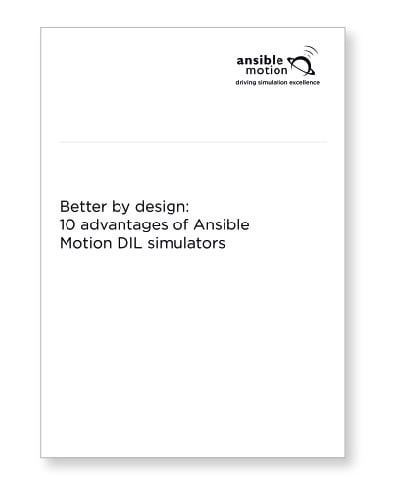.jpg?width=400&height=125&name=Vehicle-Electronics-logo%20(2).jpg) For decades, motorsport simulation technology operated within strict boundaries. Drivers trained in solitary simulator environments, working with their race engineers through various vehicle setups and circuit memorisation strategies without experiencing true wheel-to-wheel competition with fellow drivers.
For decades, motorsport simulation technology operated within strict boundaries. Drivers trained in solitary simulator environments, working with their race engineers through various vehicle setups and circuit memorisation strategies without experiencing true wheel-to-wheel competition with fellow drivers.
While this approach delivered valuable baseline data about car behaviour and tuning in ideal conditions, it also emphasized the need for virtual replication of the organised chaos of actual racing, where multiple vehicles and drivers are interacting simultaneously.

Image Source: Red Bull Content Pool
Multi-simulator suites enable multiple drivers to share a fully-synchronised virtual environment, replicating the nuances of actual competition. The physical effects of close following, the strategic complexity of energy management in traffic and even the psychological pressure of wheel-to-wheel competition can now be recreated with startling accuracy.
At the core of this revolution lies an engineering marvel. Imagine a central dynamic DIL simulator featuring a six-degree-of-freedom motion system capable of replicating the subtlest weight transfers and track irregularities during cornering battles. Wrap-around, 360-degree projection-based vision systems or cutting-edge VR headsets render lifelike environments at 48K resolution. Quick-change cockpit systems adapt to different vehicle configurations in remarkably short timeframes – a reconfigurability that proves crucial for teams competing across multiple categories or developing next-generation vehicles. Furthermore, imagine a supporting suite of fully-connected static simulators employing force feedback systems that precisely replicate steering loads, with a computational architecture ensuring perfect synchronisation across all units.
This imagined system is now a reality. This technical symphony is conducted by advanced vehicle dynamics software that models everything from tyre thermal performance to battery and drivetrain behaviour during overtakes. The level of detail extends to simulating how various system temperatures fluctuate during prolonged sessions - data that was previously impossible to gather outside of race weekends.
 Suite of Ansible Motion Theta Seat Sport simulators
Suite of Ansible Motion Theta Seat Sport simulators
As motorsport enters its next evolutionary phase, networked multi-simulation has transitioned from luxury to necessity. Teams leveraging this technology gain compound advantages across every operational facet - from accelerated development cycles to better-prepared drivers and more sophisticated race strategies. In the endless pursuit of the marginal gains that define modern motorsport, these systems have become a recognized force multiplier.
The question facing teams is no longer whether they can afford to invest in this technology, but whether they can afford not to. In a sport where standing still means falling behind, networked, multi-simulator virtual testing represents not just another tool, but a fundamental paradigm shift in how teams approach preparations for competition.
Read the full article on the Vehicle Electronics website (see the June 2025 issue, pages 20-24).




